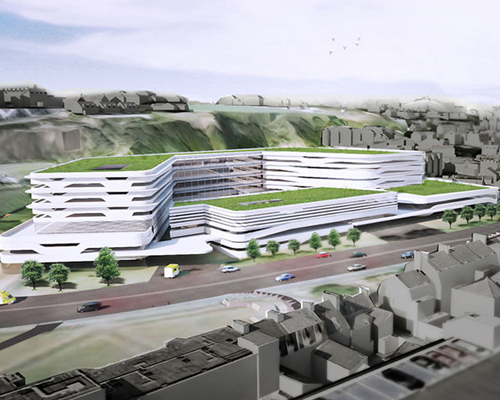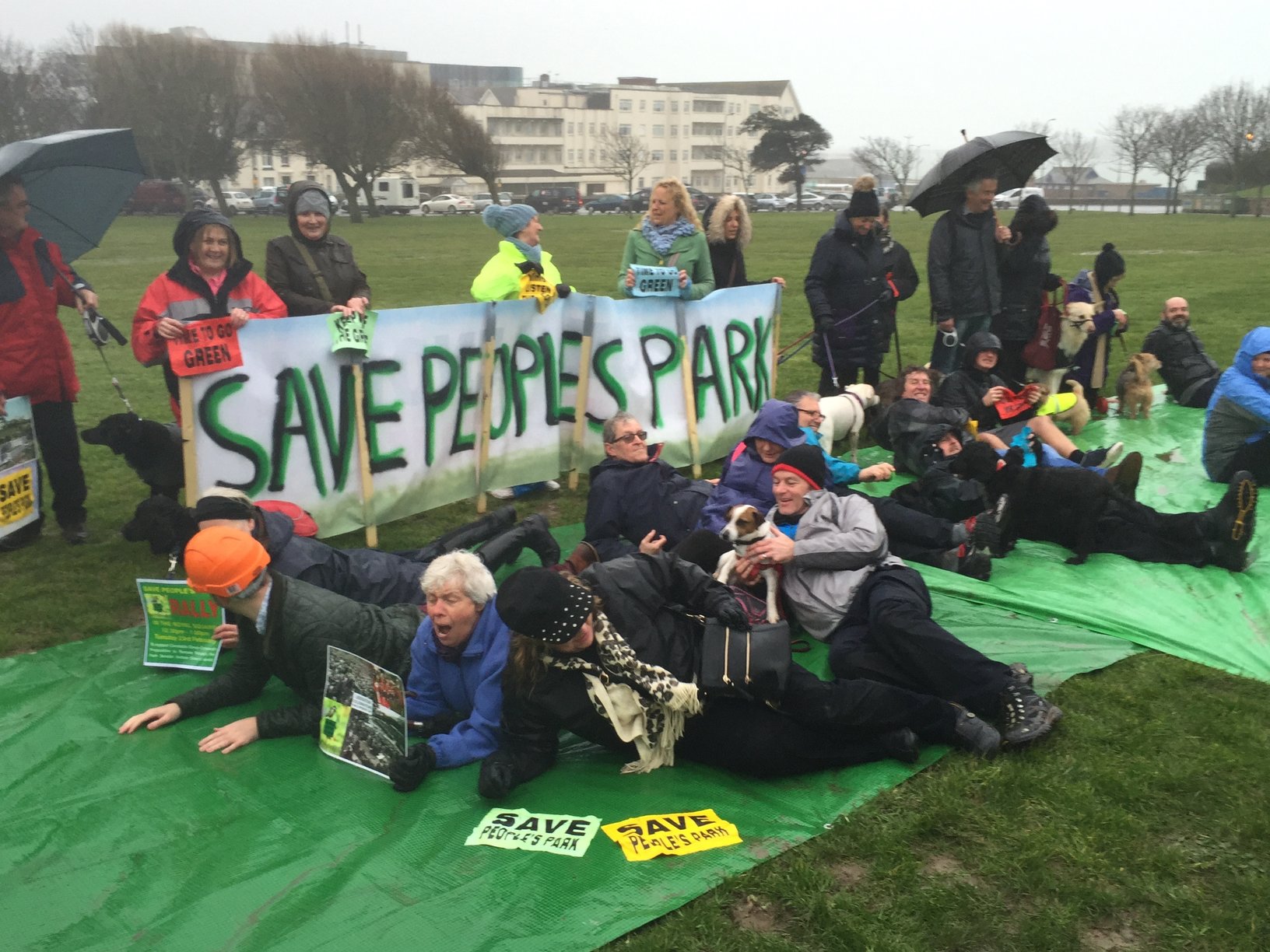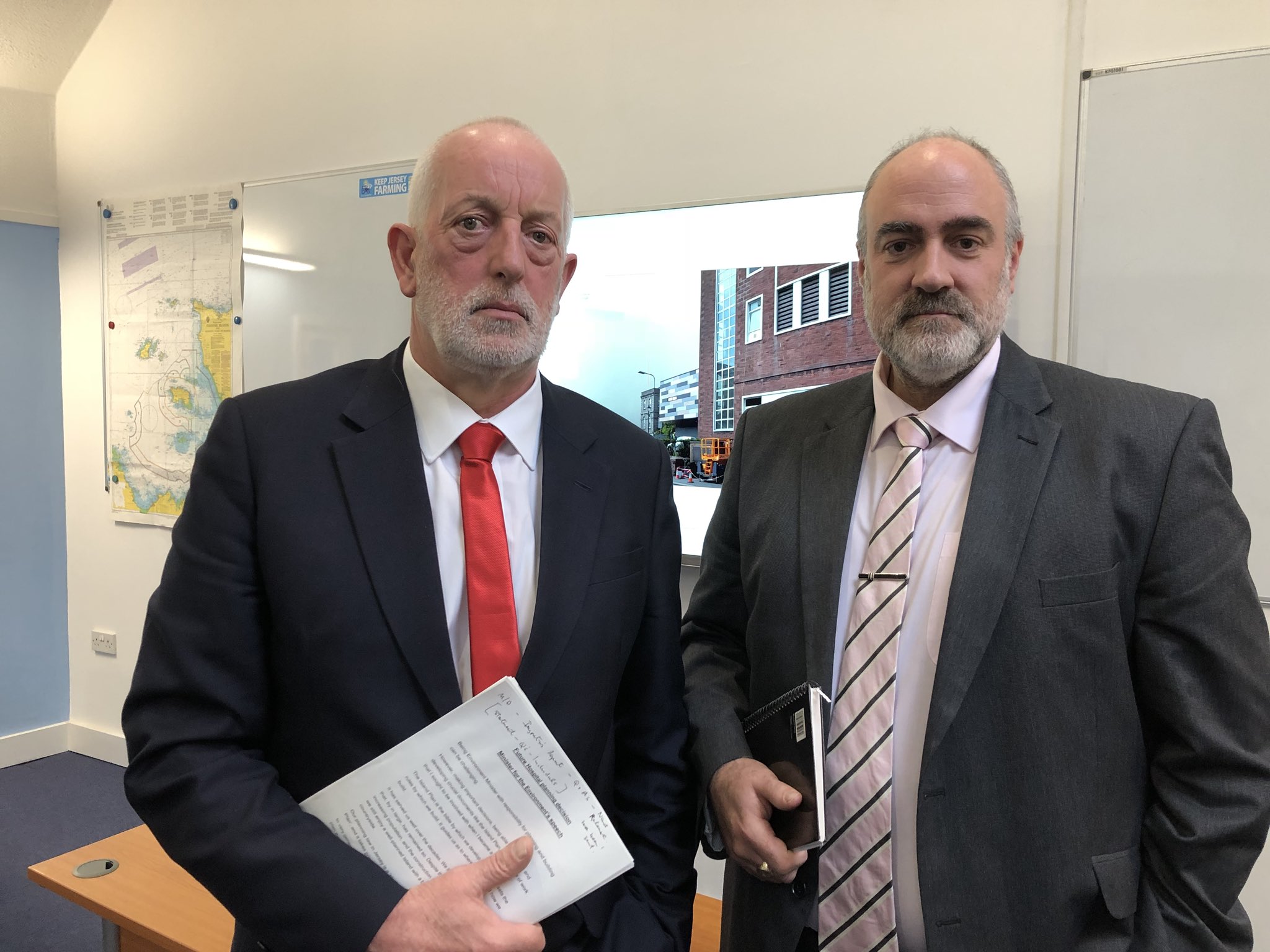


The granting of planning permission is a significant milestone on a ten-year journey to get backing for a new hospital.
Express reflects back on one of the thorniest issues the island has grasped in the post-war era.
10 years ago this year, States Members approved a key document that laid the foundations for the new hospital project: ‘A New Way Forward’.
It noted that, at the time, Health had 3,000 staff and an annual budget of £171m. The report first set out the demographic challenge facing healthcare in Jersey – with the number of people aged over 65 expected to rise by 35% between 2010 and 2020, with a projected increase of 75% by 2030 and 95% by 2040.
Presented at the time by the then-Health Minister Anne Pryke, it came alongside an acknowledgment that a “fit for purpose” new hospital was needed within the coming decade.
Pictured: Back in 2012, it was acknowledged that a new hospital would be needed within the decade.
The following year, a two-site idea was the focus of attention – and even had Scrutiny’s backing.
At the time, the Chair of the panel reviewing the plan, the then-Deputy Kristina Moore described the plan to refurbish the current hospital and expand Overdale as a “good solution”.
But, fast-forward a few years, and that was set to change…
In 2015 figure attached to the project was £300m, with then-Health Minister Andrew Green due to give the announcement of the chosen site in May of that year.
Two months before this date, however, then-Treasury Minister Alan Maclean announced that taxpayers would possibly have to fork out another £50m.
After this hike, the announcement on the location of the site got delayed until September. In the meantime, talk of the £350m figure rising to £400m soon reached the public, on top of a potential £1bn repayment of debt over the coming years.
As the price rose, the date for the announcement of the preferred sites also stretched – to January 2016.
In February, four site options were finally announced following a £2.5m research project:
a new hospital on the existing site (around £600m over 12 years);
the Waterfront (£450m over six years);
Overdale (£450m over six years); and
People’s Park (£450m over six years).
Although the latter was described as “the best-performing shortlisted option in relation to clinical efficiency”, St. Helier parishioners and the Constable teamed up to have it removed from the list.

Pictured: Though People's Park was only ever shortlisted during the project's evolution, it was at one point considered “the best-performing short-listed option in relation to clinical efficiency.”
Some islanders even lay in front of a bulldozer in the park to make their point.
Constable Simon Crowcroft ended up calling for a debate on removing the park from the shortlist – but, before one could even take place, Senator Green resigned himself to defeat and withdrew it from the shortlist in the same month that he had announced it.
Despite having months earlier said that it would cost £630m, Senator Andrew Green then said in June that building on the current site was now Ministers’ preferred choice, and that it would cost around £450m.

Pictured: Protests and pushback from the Parish meant that People's Park was removed from these shortlist in 2016.
This, he said, was because the Planning Department had indicated that the hospital could be built higher than previously discussed.
In December 2016, this latest version of the Future Hospital was voted on, with a £466m price tag attached to it, and an aim to start work in 2017 and finish by 2022.
Questions of how the hospital should be funded dominated the year – in particular, the legality of Treasury’s funding plan to borrow up to £400m - on top of loans they had taken out in other departments
within the same month, much like the Health Minister had done with People’s Park, Treasury Minister Alan Maclean shocked Assembly members by withdrawing his funding proposition altogether.
Pictured: The proposed design for a revamped 'Future Hospital' at Gloucester Street.
Despite the funding issues, a planning application for the eight storey high, 44,880m2 building was still put in for June 2017.
Even with a new funding plan agreed – mixing borrowing up to £275m and money out of the ‘Rainy Day Fund’ - the Future Hospital project was not to be.
The then-Environment Minister rejected it following a report from independent planning inspector Philip Staddon, which described the proposals as “over-dominant, obtrusive and alien".

Pictured: Deputy Steve Luce, the then-Environment Minister, with Andy Scate, the then Chief Officer of the Infrastructure (currently Director General of IHE and official 'applicant' on the Our Hospital application), on the day the plans were rejected.
Ministers decided that, taking this finding and others into account, they should have another stab at revamping the current site.
Following further work, and an election in 2018, a decision on whether Future Hospital planning application 2.0 was due.
But history repeated itself – newly elected Environment Minister Deputy John Young rejected it, with the three key flaws in the plan being the visual impact on the area, the impact on heritage assets, and “unreasonable” harm caused to people living near the hospital.
Pictured: Deputy John Young announcing why he was rejecting the plans in 2019.
At this point, there was a new Chief Minister – and he wanted to take the project back to square one.
With £44.6m having been spent on the previous project, a further £7m was needed to kick the process back into action.
This included a whole new team leading it, a 'political oversight group' chaired by Senator Lyndon Farnham, a new site selection process - and a new name, with the 'Future Hospital' project becoming known as 'Our Hospital'.
After a number of delays in 2020 due to the pandemic, the final site selection process reached its climax, and history repeated itself, again, with People’s Park causing controversy once more as a top two contender for the site.
However, in a move that Deputy Kirsten Morel dubbed the “least surprising announcement of 2020”, Overdale was announced in October as Ministers’ preferred choice.
Upon announcement, Senator Lyndon Farnham said that the cost of building at Overdale would be around £550m.
However, the report released shortly after showed a figure over £250m more than that - to include additional costs and contingency funding - with the report estimating around £804m would be spent on building the new hospital.
Funding was, perhaps, the least of the Government’s worries – there was now a very angry set of Westmount residents to deal with, who were particularly upset by the ‘hospital highway’ plans.
Advocate Olaf Blakeley used an ancient legal device known as a ‘requête’ to call a Parish Assembly in January, which led to parishioners decisively voting to block any further construction work on the access road until Ministers provided more detail about their plans.
Parishioners also supported St. Helier taking legal action to resist the Government using compulsory purchase to seize land around Westmount Road before the Parish has considered the information provided.
Another thorn in Ministers’ side courtesy of the Advocate came in the form of a viral video, which sought to ‘fact check’ key claims made about the hospital project, such as how many trees would be lost.
Video: Advocate Blakeley's 'fact check' video.
Meanwhile, some campaigners denounced the look and size of the ‘hospital on a hill’ – feedback the Our Hospital team said they had taken into account when they announced in September that they had scaled back the design by around 4,000sqm and scrapped its ‘wave’ shape.
The year came to a close with the addition of more drama from St. Helier when the parish rejected a £6.5m offer from the Government for parish land needed for the project – meaning that the Government would instead need to look at compulsory purchase.
In the hope of accelerating the project as the end of their term drew near, Ministers had decided to split the planning application for the £800m new hospital in two: demolition and construction.
However, in February, the Planning Committee decided to refuse permission to demolish 20 buildings on Westmount.

Pictured: The previous 'tortoise-shell' roof design was replaced following feedback.
Senator Farnham, however, denied that it would have a material impact on the overall timeline to have a new hospital up and running by the end of 2026 as they would effectively have a second bite of the cherry when the main planning application was considered.
In a shock move the following month, the Government’s own Planning Department issued a strongly worded statement saying it could not support the £800m proposals.
Their evidence, as well as that of medics and campaigners, was considered in April by Philip Staddon, who was back on the island for yet another planning inquiry.

Pictured: Independent planning inspector Philip Staddon.
He was to consider the plans against a new three-year ‘bridging’ Island Plan, approved by politicians just weeks earlier, which contained a special new clause.
It said that development will be supported where “the proposal is not considered to cause serious, unacceptable harm to the character and amenity of the wider area” and “it has been demonstrated that the proposed development represents the best design option relative to be needs of the hospital and the land available.”
Mr Staddon’s final report was completed and landed in the Environment Minister’s hands last week – and, today, Deputy John Young’s final verdict was delivered.
£800m hospital at Overdale is approved
FOCUS: Third time lucky! Why the hospital got over the line this time
Gov delays borrowing for new hospital
Supporters and opponents respond to hospital green light
Grins, groans and GIFs... Social media reacts to the hospital decision
TIMELINE: A decade of (in)decision
FOCUS: 10 years since we agreed a 'New Way Forward' for Health... What happened?
Comments
Comments on this story express the views of the commentator only, not Bailiwick Publishing. We are unable to guarantee the accuracy of any of those comments.